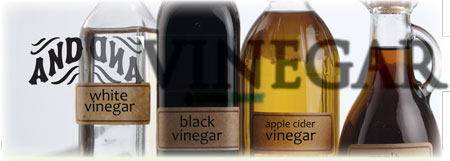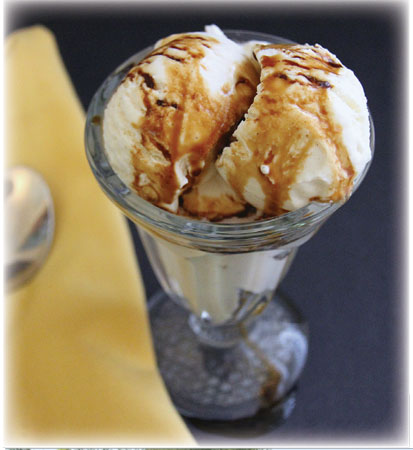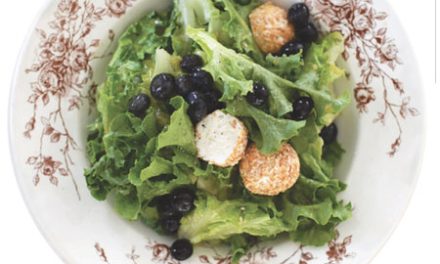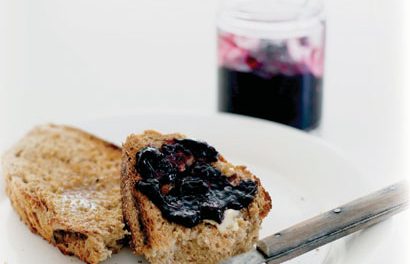
By Linda Davey.
A two part series, began with “Oil and…” in Spring, and now “and VINEGAR”!
By now you probably have a good idea of what fills my pantry. Over the last few issues, I’ve shared info about various spices and oils that can enhance flavors in your cooking. Vinegars are another category of ingredients that can make your palate pop. Used appropriately they can brighten the flavor of savory foods and are typically considered tart. As we explore a variety of vinegars in the next few paragraphs, you’ll also be introduced to using them in sweet foods.
My first memory of vinegar was using distilled white vinegar when coloring eggs for Easter. Since then, I have used it in salad dressings, to make cheese, to clean a variety of surfaces (some of which it was not appropriate for!), and even to unclog slow-running drains. White vinegar is usually made from a neutral-flavored grain alcohol such as vodka. It is produced through a second fermentation of the alcohol that produces an acetic acid and water solution we recognize as vinegar.
Vinegars can be made from any form of alcohol and have different flavors based on the original alcohol. Apple cider vinegar is made from hard apple cider, red wine vinegar from red wine, malt vinegar from beer or some other malt beverage, and so on. Vinegar can also be made with fruit (scraps or whole), sugar, and water. Vinegar made this way will go through a two-stage fermentation process where the solution is converted first to alcohol, and then to vinegar.
Vinegar on the grocery store shelves can be either pasteurized, meaning it has been heat-treated to stop any additional fermentation, or raw. Raw vinegar will sometimes contain a visible “mother” at time of purchase—it looks like a cloudy blob, usually at the bottom of the bottle. Vinegar can also develop a mother as it sits on your pantry shelf. This mother is actually a naturally occurring pellicle containing the yeast and bacteria necessary to convert a sweet liquid to vinegar through fermentation. It is necessary to have a mother to make your own vinegar. If you have one, you can easily make vinegar at home.
To make your own vinegar, combine six cups of cut fruit or fruit scraps (apples, blueberries, strawberries, grapes, and figs work well) with 1¼ cups organic cane sugar in a one-gallon glass jar. Cover with water until one inch below the mouth of the jar. Stir until the sugar is dissolved. Add three tablespoons of any vinegar with a mother and cover the jar with a cloth and rubber band. Leave at room temperature (away from direct sunlight) to ferment for three weeks, stirring daily. You will begin to notice bubbles forming in the vinegar after about a week.
Once the three weeks are up, strain the fruit and return the liquid to the jar. Replace the cloth lid and continue to ferment for another six weeks. During this time, you may notice a mother form on the surface of the liquid. It may also drop to the bottom of the jar. This is all normal.
When the six weeks are up, seal the jar with a solid lid and store in your pantry. You can use this vinegar in a variety of recipes, including anywhere white vinegar, wine vinegar, or apple cider vinegar are specified. Unless you use a darker, stronger-flavored fruit as your base, this would not be a good substitute for balsamic vinegar (blueberry and figs would be nice for that).

Drizzle a bit of balsamic (or blueberry) vinegar over your vanilla ice cream for a tangy treat!
As far as how to use vinegar in your cooking goes, you’re probably very familiar with using it in salad dressings and marinades. I have recently begun using it in desserts. When making strawberry shortcake, try adding a tablespoon of red wine vinegar to the cut strawberries instead of sugar (or in addition to). If you make your own caramel sauce, try adding a tablespoon of balsamic vinegar to the brown sugar before boiling. It deepens both the color and flavor of the caramel. While you’re at it, drizzle a bit of balsamic (or blueberry) vinegar over your vanilla ice cream for a tangy treat. If you’re feeling adventurous, let the ice cream soften a bit and mix the vinegar in.
If you’re looking to add herbal flavors to your vinegar, you can infuse it with fresh or dried herbs. To do this, you will need to heat your vinegar over medium heat until steaming (not boiling). Add your herbs to a jar and cover with the hot vinegar. Allow to cool completely, then seal with a tight lid. Store refrigerated for up to three months. For longer storage, process in a hot water canning bath.
One final note on vinegar—many tips, tricks, and recipes are out there for cleaning your home with vinegar and homemade vinegar-based cleaning products. You can also purchase cleaning vinegar which is slightly more acidic than distilled white vinegar. When using vinegar to clean, be sure to follow instructions and be mindful of the surfaces you are cleaning. Vinegar is acidic and can damage some surfaces and finishes.
Now, grab your favorite bottle of vinegar and use it to make the salad dressing recipe I shared in our last (Spring 2023) issue (page 34). Enjoy!
Linda Davey is the Executive Chef at KAM Appliances. An avid consumer of food and food information, she is thoroughly enjoying learning and sharing with all of you.






